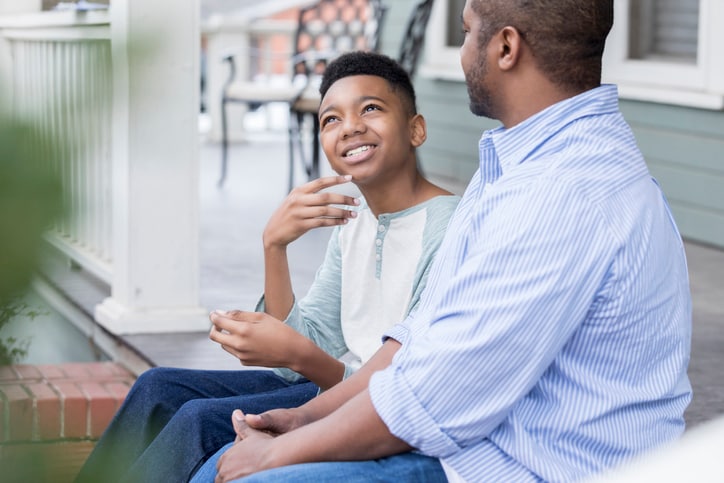Seeing your child holding her belly in pain is distressing to parents and also tricky to know how to handle. Is it a little constipation or could it be food poisoning? Should you make your child comfortable at home and wait for tummy troubles to subside or rush to your pediatrician’s office? Knowing what type of stomach pain is serious and what kind you can manage yourself will help ease your worries.
Types of Pain
Stomach pain in children can be caused by nausea or gas, or something more serious like the flu. Pain can be triggered by something your child ate, such as fatty or gas-producing foods, or certain medications, such as ibuprofen. Knowing what type of pain your child is experiencing will help you know what to do.
There are two basic types of pain, according to Dr. Sandra Braganza, pediatrician and residency program director at the Children’s Hospital at Montefiore in New York:
- Acute abdominal pain is usually sharp and begins suddenly. It may be mild or severe, and it may pass quickly or last a long time. Once the cause is addressed, acute pain typically goes away.
- Recurrent abdominal pain comes and goes, with at least three episodes in the past three months, and is severe enough to interfere with activities.
Recurrent abdominal pain happens for a variety of different reasons, and occurs in nine to 15 percent of all children, says Dr. Braganza. She adds that it’s most common in boys between ages of 5 and 6, and in girls between ages 5 and 6 and later, between ages 9 and 10.
Managing Stomach Pain in Children at Home
Keep a pain journal to track your child’s pain, suggests Dr. Braganza. Record when it occurs, how bad it is, if it affects activities, where the pain is, what the possible triggers are and what eases it. Because it is often difficult for children to describe their pain, doctors often use pain charts with pictures and numbers to help children verbalize.
If you’ve determined your child’s condition doesn’t require a doctor visit, you’ll want to help your child feel more comfortable until the pain subsides. Drs. Michael Lawson and Jessica Del Pozo, authors of “The Gut Solution,” suggest these ways to help:
- Validate Your Child’s Feelings — Be Supportive Without “Rewarding” Suffering
Acknowledge the pain as real while gently encouraging your child to continue with daily activities, taking breaks if needed. - Try Relaxation Techniques
This might include diaphragmatic breathing, which involves breathing in slowly through the nose while having a hand on one’s stomach. When done correctly, as the air comes in, the stomach will move out against one’s hand. Guided imagery practiced daily or even several times a day can also help. Guided imagery is a type of meditation in which a parent would describe a relaxing scene or soothing story while the child visualizes it unfolding.
Use Activities as Distractions From Pain
These might include reading or spending time with friends and family. Fun activities release endorphins and enkephalins, the body’s natural painkillers, especially when movement is involved.
“Listen to the child for what may be adding distress to the stomach,” says Dr. Lawson. “Sometimes high-fat and high-sugar foods contribute to pain, but more often it is something the child fears that is triggering their digestive track to constrict, making it hard to digest food normally.” Once your child feels better, he should gradually return to being active, getting outside whenever possible.
If your child is still in pain, acetaminophen, a children’s antacid or a stool softener might be helpful, but be sure to speak to your child’s doctor to determine which is appropriate and in what dosage.
When to See a Doctor
Dr. Braganza cites these reasons to seek medical care for stomach pain:
- Pain that lasts more than one hour, or pain that comes and goes and lasts more than 24 hours
- Refusing to eat or drink for a prolonged period, which may result in weight loss
- A fever for more than three days
- Blood in stools
- Severe diarrhea
- Recurrent vomiting
- Pain when urinating or needing to urinate frequently
- Any behavior change, such as lethargy or decreased responsiveness
Other Tips
The National Institutes of Health (NIH) recommends treating stomach pain with a bland diet. Avoid caffeine, milk, juices and sports drinks. Water, ginger ale or oral electrolyte solutions are better choices. Your doctor may also recommend medications other than the ones mentioned above.
And Here’s What to Do When Your Child Has the Stomach Flu.
Kathleen Marshall is the mother of five and grandmother of two. She has dealt with her share of tummy aches and is happy to share her expertise and experience with new parents.
* This article is for general informational purposes only. It is not intended nor implied to be providing medical advice and is not a substitute for such advice. The reader should always consult a health care provider concerning any medical condition or treatment plan. Neither Care.com nor the author assumes any responsibility or liability with respect to use of any information contained herein.




